As part of this season’s showcase of innovative dance companies, The Broad Stage in Santa Monica featured two world premieres by Kybele Dance Theater on Friday, September 14—Güneş Doğudan Yükselir (Sun Rises From the East) and Noir. These two short pieces combined with the much longer Sonsuz (2015) created a visually stunning production made up of both Western contemporary and traditional Middle Eastern dance. Together these two styles strung a strong signature thread through choreographer Seda Aybay’s repertoire for the evening, forming a cohesive show. Though thematically similar, the pieces strayed away from resembling one another, with each work featuring a variety of elements that allowed their individual characteristics to shine through.
Güneş Doğudan Yükselir (Sun Rises From the East) began the show with a venture into abstract shapes and lines. According to the program, the inspiration for the work came from Sufi philosophy (from Islam) combined with Turkish symbolism of the pomegranate or “nar”, which embraces the hundreds of unique seeds that come together to make the fruit. The dance fully encompassed this concept and interpreted the theme through a creative and unexpected use of props whose symbolic clarity became a clearer choice toward the end of the short ten-minute piece.
Similar to what would be the husk of the pomegranate, a large and long translucent sheet became the motif the performers used as a way to celebrate similarities and unity. The opening scene played out in something resembling a doorway, created onstage by pulling the curtains close to the performers on either side in order to narrow the viewers’ perspectives and add an extra layer of depth to the imagery. In the small open space, two dancers—Aybay and David Matthew Rodriguez moved around beneath the sheet like newlyweds in a marital bed. Her legs wrapped around his waste and when she peeled her body away from his, bending backwards to face the audience, their arms extended on either side of them, giving them the appearance of a multi-headed god or poker card. Upon releasing one another from their tightly entwined grips, it became clear that the cloth was tucked around them like skirts, keeping their bodies connected despite the distance they set between them when pulling apart
Once the couple exited, the curtains were pulled back and the rest of the space was given full visibility as a dancer dragged the same dark blue curtain out diagonally across the stage, covering it like a blanket. From there, the prop evolved into ocean waves that swelled, allowing other members of the ensemble to swim beneath it, passing along the path in unique ways while their movements influenced the flow of the material. Some struggled to get across, playing a game of tug-and-war when wrapped in the blanket, while others easily passed through, using contemporary kicks and slides to make it onto the other side, always emerging stage right (east) and departing stage left (west).
Alan L. Perez made his way across a new, white blanket pulled out by another dancer. His character was the only one to step onto the cloth, confidence pouring out of his body through rolling chest bumps and wiggling arms that maneuvered around and across his head, with his hands occasionally coming together in prayer. Mercan Dede’s “Water Ceremony,” which started off creepy and mysterious, adding to Aybay’s and Rodriguez’s unsettling duet in the beginning, was now more rhythmic. The new addition of drums inspired Perez to twitch and harshly pop his limbs in a way that complement the smoother Middle Eastern undulations dominating the rest of his movements. During a peak in the music, Rachel Walton emerged to join Perez, her movements more contemporary until she joined him. Their choreography quickly blended together before the two drew closer to hold one another sentimentally—a bid for peace and understanding.
Noir took on a completely different tone. A much more concrete story, the work utilized film and projections to mock a 1940s detective tale in order to portray the power of a femme fatale who seduces her way into getting away with theft and murder. It began with a black-and-white film and the introduction of Dik (Rodriguez), a private eye and the main protagonist. His thoughts make up the only spoken words heard in the piece and are narrated by an unseen Tony Lanza. In the film, Dik is seen going over the details in latest event that have taken over his life—the murder of a young, innocent girl named Lillian (Genevieve Zander). Her case is brought to his attention thanks to her close friend, Audrey (Aybay), who accuses Lillian’s new husband, Romeo (Christian Espinel) of the crime.
As the plot evolves, the smoldering onscreen looks reflective of a dreamy-eyed Humphrey Bogart are coupled with the dancers emerging on stage to add a live component to their characters’ interactions. Danny Elfman’s “Logos” and “Music From the End Credits” heightened the whimsical mood and scenes of deception, as did Bernard Herrmann’s “Scene D’Amour” from Veritgo and “A Narrative from String Orchestra” from Psycho. Aybay’s choreography in this piece concentrated more on contemporary ballet, with only a few hints of the arm and belly rolls visible in Middle Eastern dance. Part of her signature movements seen in both Noir and Güneş Doğudan Yükselir were a general connection to the earth, which saw her bending her knees and getting close to the ground, before suddenly shifting to reflect elements of contemporary ballet—airy and erect upward body movements and high arm and leg extensions.
Close-ups of the dancers’ faces on screen and beautiful backgrounds featuring the park and other key scenes in the story helped add to the general mood without ever eclipsing or competing with the dancing. Each characters’ signature routines helped establish their one-dimensional personalities (usually a negative aspect, but entirely appropriate here)—Lillian’s frantic spins made her appear untouchable and lost as the ghost of a woman gone too soon, while Romeo’s wide stances and scrambled extensions were confirmation of his innocence and weakened emotional state after the passing of his wife. Dik’s strength was visible in his throwing back his shoulders during confrontational scenes with both Romeo and Audrey, while Audrey’s sneaky shimmies and constant sly expressions revealed her as the guilty party way before Dik’s confession of his willing ignorance about her warped intentions. This was especially well-portrayed in a clever segment in a penultimate scene where she danced with her shadow, which was cast against a ghostly background. She lifted her curved arms and moved away in from the wall, eventually distorting her silhouette, making it appear like a spider ready to strike its prey. Overall, the piece was a rapid-fire delight full of sarcasm (thanks to Carl Owens’ cheeky screenplay and cinematography). Its 20-minute run time flew by in a flurry of gliding movements and quick exchanges all the way through to its predictable, yet equally entertaining and dramatic ending.
The evening concluded with a long, 45-minute piece called Sonsuz, which dove into an unspecified Mary Oliver poem. The title translates to “Endless,” which was an appropriate label for how long it felt, especially as a follow-up to two very short world premieres. Though beautifully composed and enjoyable, Aybay’s choreography sometimes seemed a bit repetitive, visiting and revisiting the topic of endlessness in life and love in similar ways. The artistry of some of the in-between sections helped balance its perhaps purposeful redundancy so as not to make the piece seem tired, but its ending, which was more of the same seen throughout the work, could have come a bit sooner.
Sonsuz’s advantage was its pure concentration on movement. If the first half of the show provided clear examples of Kybele Dance Theater’s artistic talent, then Sonsuz was the ultimate showcasing of the company’s technical prowess through purely dance-based performance. Low rond de jambes and slow attitude extensions gave the work a slower, more romantic feel.
The main thing to focus on in this piece from Aybay’s repertoire were the love triangles and instances of unrequited love. Set to an instrumental soundscape designed by Aybay, the melancholic melodies were composed of climactic strings and lulling piano solos—a sharp contrast in tone from the also love-themed works seen earlier in the night. Certain characters’ stories, namely those of Rodriguez, Jessie Lee Thorne and Sy Lucas, were part of a continuous narrative that weaved throughout the multi-tiered piece. Perhaps the most powerful moments were those that demonstrated pining. Each staggered walk, clingy embrace and pained expression added to Sonsuz’s heaviness. The couples represented a wide range of sexuality and their tendencies to either chase after their same partners, or, after several scenes, move on to a new one, added depth to the tale.
Aybay was once again one of the main characters in the piece. Much of her role involved adding complexity to the different segments, sometimes by getting in between two of the lovers, such as Lucas and Rodriguez. Other times she performed a solo in the foreground that added texture to the scene, but simultaneously distracted from the rest of the ensemble’s synchronicity. Often the dancers contrasted the slow-motion extensions she performed while rolling on the floor by rotating and pivoting their limbs in angular staccato moves, standing up right behind her. Other times they rolled across the stage themselves as she walked and skirted around their bodies. Either way, her constant presence as the star was a bit gratuitous. The most interesting aspect she added to her dancing were little hints of upcoming confrontations caused by her constantly controversial characters. She used her fingers to indicate small nuances—shushing movements meant she was being sneaky and the rotating of her finger into her palm represented her “mixing the pot” when intervening with lovers. This was seen most strongly in Sonsuz, but also subtly present in both Güneş Doğudan Yükselir and Noir.
Kybele’s show ended with a brief Q&A between the artists and Aybay’s colleague at Santa Monica College – Flamenco teacher Cihtli Ocampo – before the floor was opened up to the audience. Aybay mostly went through her process in developing her choreography, stating clues readily in-tune with the way her pieces established themselves, first through shape, then into their respective stories. When asked about how she inserts herself into her work, she described it as difficult and the final part of the process. Though the evening’s overall effect was a well-narrated introspection on life (Aybay’s simple answer for her source of inspiration) from many different angles, her future work may benefit from letting her equally talented dancers take the spotlight a little more often.
For more information on Kybele Dance Theater, click here.
Feature image: Kybele Dance Theater – Photo courtesy of the artist.

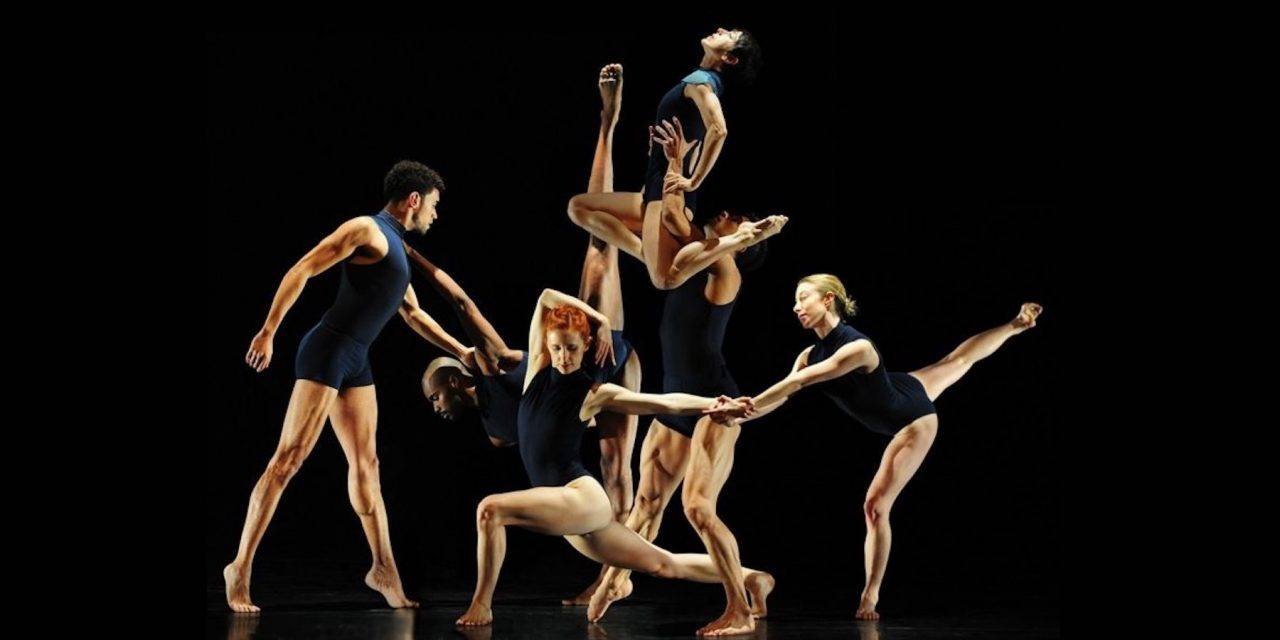
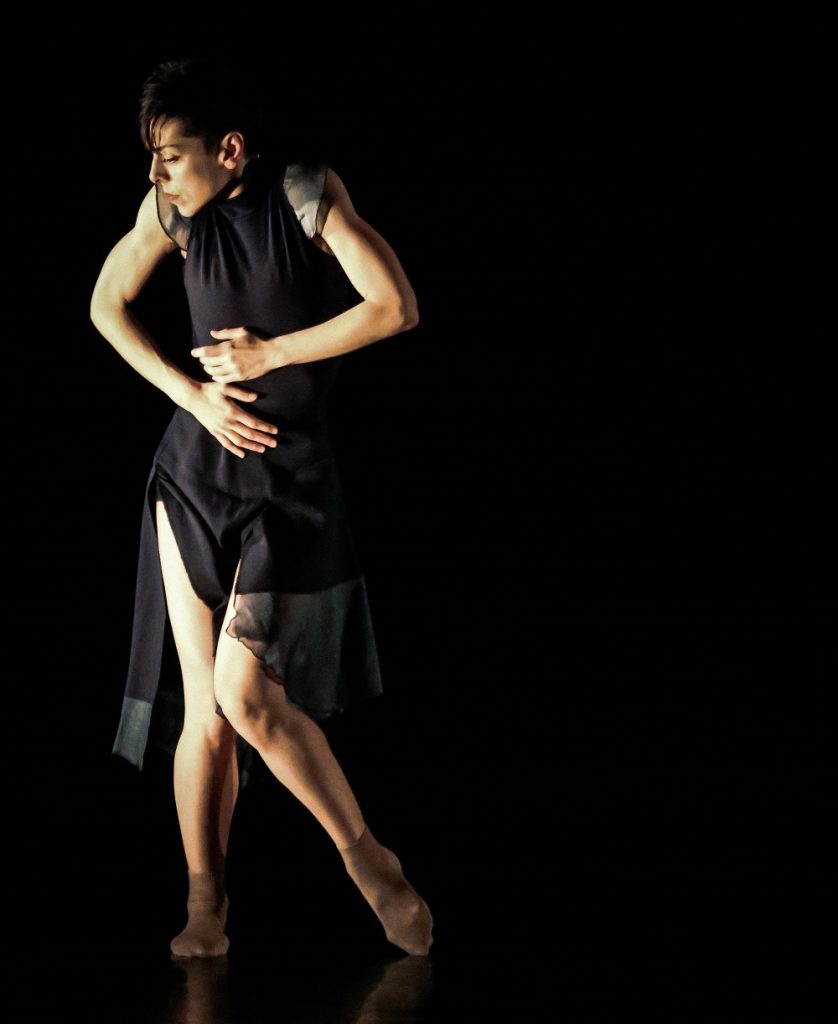
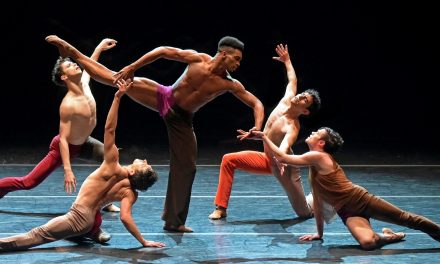
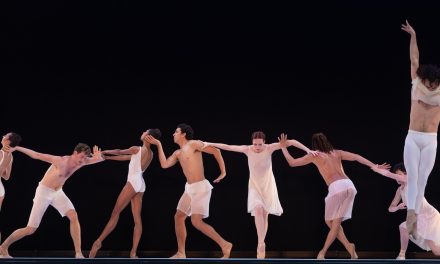
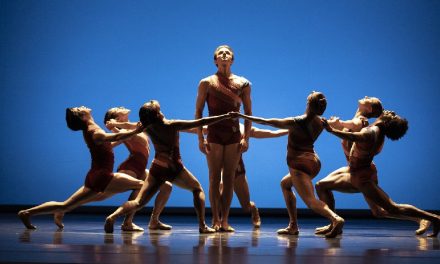
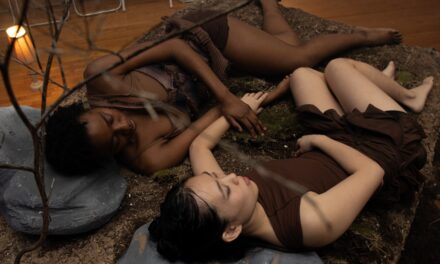


There is an inconsistency in the article. Paragraph 5, second to last sentence: Walton joined Perez in a duet, not Rodriguez.
The error has been amended. Thank you!